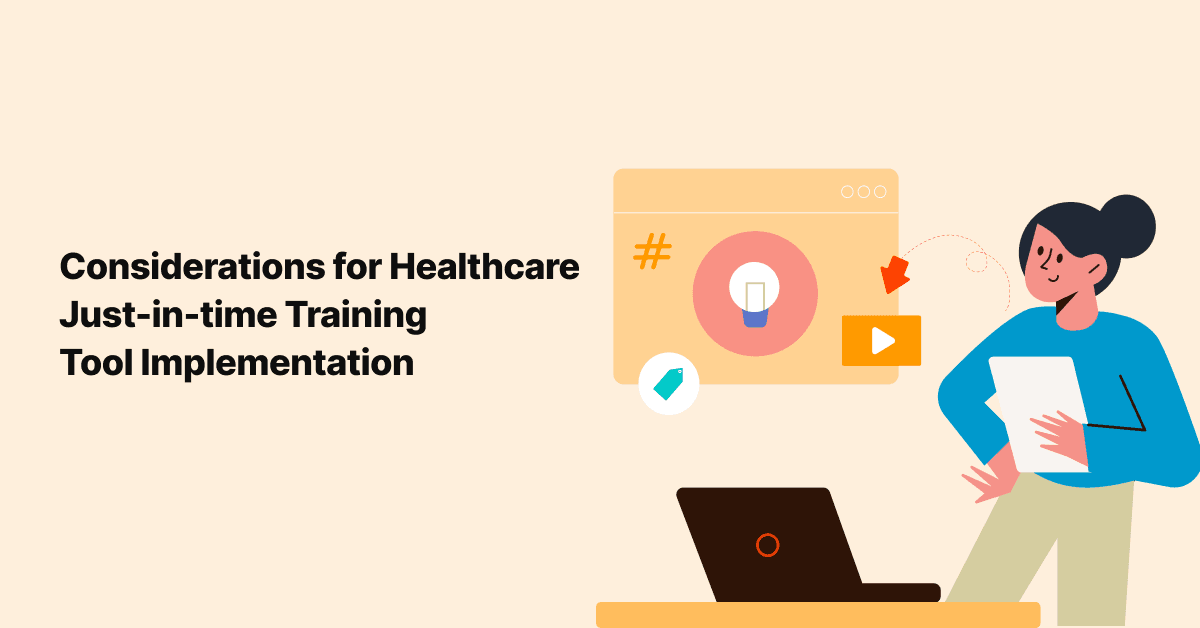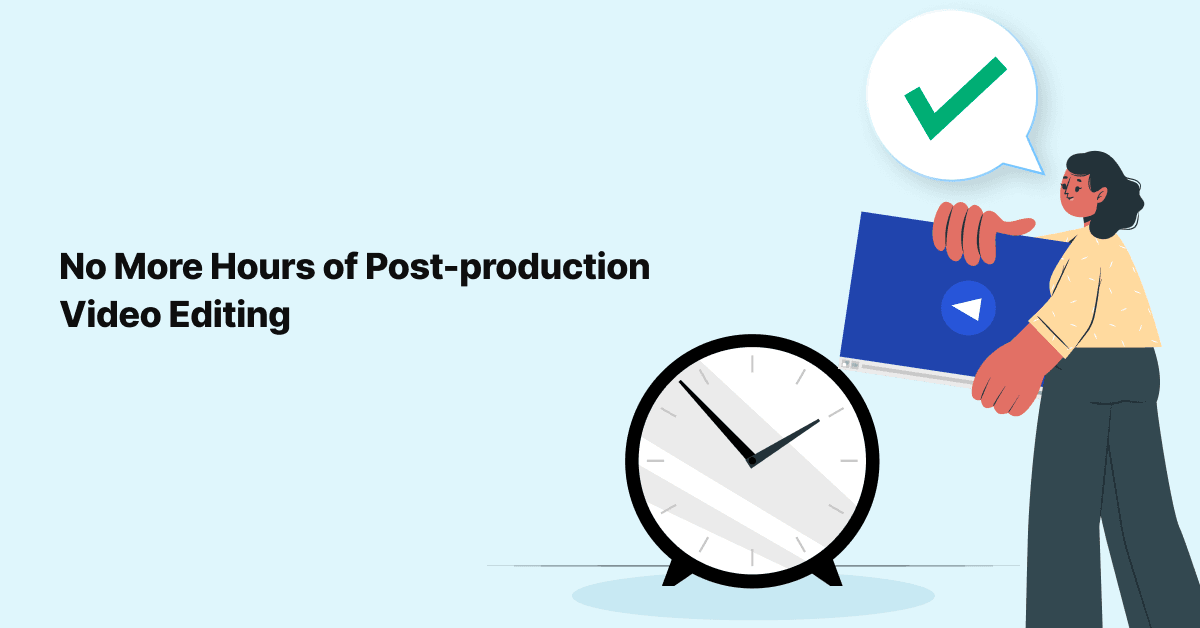
4 Critical Considerations for Just-in-Time Training Tool Implementation in Healthcare
The use of software in healthcare has become all the more prominent with COVID-19. In fact, health information …

As a CIO, if you had to get your clinicians’ feedback on the newest EHR implemented or the most recent upgrade that your organization went through, then you would most probably hear things like “struggles with the interface,” “alert fatigue,” “insufficient workflow support,” “difficulties with data entry,” and many such similar kinds of issues. This indicates that your EHR usability isn’t as trouble-free as it was assumed. One of the major reasons for such difficulties in usability is the lack of appropriate training; in fact, without the right training provided to the users, navigating through an EHR may seem nothing less than finding their way out in a maze.
However, in most cases, this isn’t the sole problem. The EHR users may find it difficult even after being trained for it. This is mainly because, oftentimes, the situations in which they are trained are quite different from what they face on the floor during their everyday workflow. The differences create confusion and make the use of EHR challenging for your users. In certain cases, recalling everything they were trained for could also be burdening, and this is precisely why every hospital and healthcare organization must supplement EHR training with support tools for moments when the users face difficulties within the workflow.
In this article, you will discover:
The importance of providing EHR users with support cannot be emphasized enough. It directly impacts their usage of the EHR to its optimum potential. It is also critical for clinicians because they cannot afford to make mistakes when it comes to patient data, as that determines the diagnosis and treatment in the present and even in the future. Taking this into consideration, healthcare has introduced quite a few measures to support clinicians in their workflow. Let’s take a look at each one of them and evaluate them based on their efficiency in resolving issues in the workflow and helping clinicians in their moment of need.
Help desks have been quite a favored solution in healthcare to support EHR users whenever they face any problems in their workflow. With help desks, users are usually required to raise support tickets for any question that arises in the workflow. The help desk would look at all of the support tickets raised by clinicians throughout the healthcare organization and resolve them. One of the major requirements for smooth problem resolution through help desks is effective communication.
Communication is certainly the key to resolving queries as quickly as possible. However, in most cases, the help desks struggle with managing support tickets as there are problems with assigning the right person to a specific problem. This leads to delays in providing the EHR users or clinicians with the support and solution they require, and it leads to problems in their workflow. Yet another problem with help desks is that with the time pressures, the user problems are directed to different departments on different occasions; this brings about inconsistency despite having a standard database of answers to EHR questions. Ultimately, it adds to the confusion already prevalent in the situation.
Since having people provide solutions over a call seemed to be a hassle, highly knowledgeable and specialized people were brought on the ground to help clinicians, specifically during an EHR conversion. The support is available right at the elbow of the clinician, and that’s precisely why it is called At-the-elbow support. Clinicians do really appreciate this measure as there is a dedicated person to support any issue they face.
While a human at the below is a great way to help your EHR users, it is not something that can be scaled in the long run. This is mainly because of the high costs that ATE support involves. One other problem with ATE support is that since it involves dedicated attention from an individual, the number of questions the ATE could resolve per day is relatively low and doesn’t scale to meet the organization’s needs.
The grasp of the challenges involved in using help desks and ATE for support has led to several hospitals creating numerous training content assets, mostly in the form of tipsheets, and storing them on a Sharepoint portal.
The first and foremost problem with a tipsheet on a Sharepoint portal is that searching through a bunch of documents is taxing, and even if your clinician has put in the time and energy to search through the Sharepoint portal, they may not go through the multi-page long tipsheet to comprehend the solution. This leads to the whole process of creating content being useless and, most importantly, does not solve the problem of supporting your clinicians for problems in the workflow.
A Just-in-time (JIT) healthcare application support tool is a digital solution that supports the adoption of enterprise applications and improves end-user performance by providing “just-in-time” assistance in the workflow through self-help resources.
A JIT support tool stands above the rest in terms of support, mainly because it helps solve all the problems posed by the other kinds of EHR support offerings. A JIT support tool can make the provision of support effective because of the following reasons:
If you look at help desks, one of the major issues was the time taken to resolve a support ticket. However, with a JIT support tool, that problem is eliminated because the EHR user or clinician doesn’t have to be dependent on anybody to resolve the issue but rather can use self-help resources to solve the problem, thereby avoiding any kind of delays in the process.
A JIT tool can be efficient when it comes to meeting long-term scalability needs. It provides healthcare organizations with the capability to update and use the content over a longer period. This makes it effortless to cater to any growing need while ensuring the ability to keep up with the speed of change.
A JIT support tool is quite effective when compared to a Sharepoint portal or an LMS dashboard because it helps with each location of the resources. This makes things so much better for the clinician as there is no longer an additional burden of searching through numerous resources. In fact, with the power of AI, a JIT support tool goes one step further by suggesting self-resources based on the role of the clinician in the organization, past searches, and such criteria.
These were just brief descriptions of a JIT support tool that solves the problems posed by the other choices of EHR support. In fact, a JIT support tool can do more than just this for support.
Apart from ensuring that support resources are delivered at the moment of need, scalable in the long run, and help with smart searches, a JIT support tool can do a lot more for EHR support, such as the following:
Most importantly, a JIT support tool can bring about consistency in the resolution of every question that arises in the EHR workflow as it provides one standard answer to all clinicians unlike the other means of providing support.
These are some of the most common reasons that make JIT support tools the most desirable choice for CIOs when it comes to improving EHR usability. If you are looking for a JIT tool that provides all the above-stated benefits and, in fact, even more, then you must take a look at our very own Jeeves, a JIT support tool that makes working with an EHR extremely easy and efficient.
Join over 3,200 subscribers and keep up-to-date with the latest innovations & best practices in Healthcare IT.

The use of software in healthcare has become all the more prominent with COVID-19. In fact, health information …

Ever freeze up like a deer in headlights when it's time to record a microlearning video? (We've all been …

The need to look into EHR upgrades and support users post an upgrade is something that is on the top …